Scumpia "Royal Pearl": description, planting and care
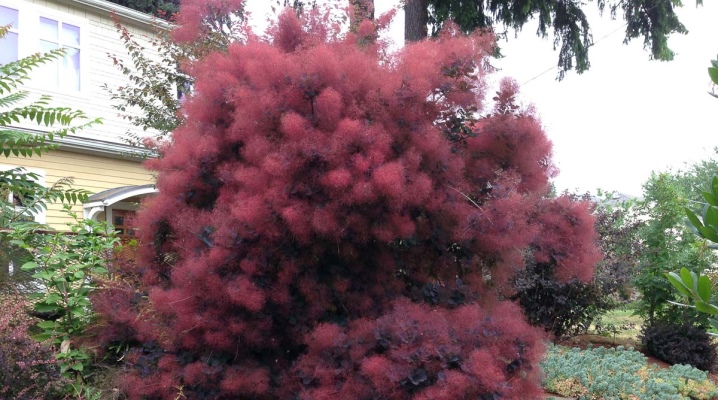
The Royal Pearl scumpia is a magnificent garden plant with unusual purple foliage. During the flowering period, this variety looks especially elegant, combining pink clusters of inflorescences with a bright crown. In autumn, the royal violet tanning skumpia pleases the eye with red-orange shades of leaves. The plant retains its decorative effect until the very cold weather, which favorably distinguishes it from other horticultural crops.
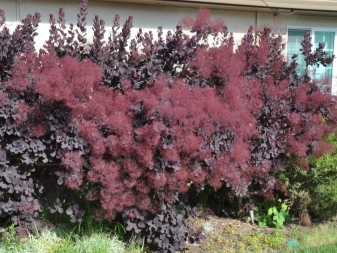
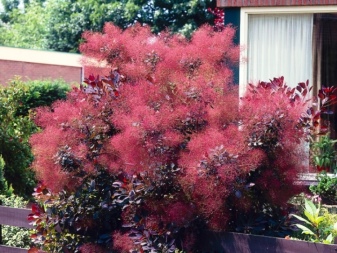
How is planting and care carried out, is it necessary to prune the scumpia? Having studied in detail the description of the variety, having learned about its winter hardiness, one can understand how comfortable it will be to grow it on the site. The practical experience of Russian gardeners and examples in landscape design prove that Royal Purple, despite its exoticism, takes root well in the climate of the middle zone, is grown in the Urals and Siberia.
Usually varieties with purple and red leaves tolerate frosts much worse, but with due attention this scumpia can easily adapt to the most unfavorable growing conditions.
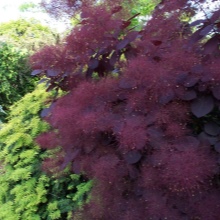
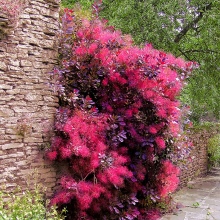
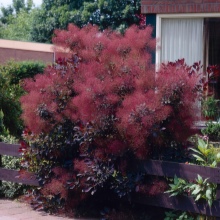
Description
Skumpia tannery has great practical value - it is used to obtain dyes for various areas of industrial production. In the conditions of the garden plot, the plant is used as an ornamental one. Variety "Royal violet" is a prominent representative of the sumach family. Scumpia "Royal Pearl" reaches a height of up to 5 m, but in cold climates rarely grows even up to 1.5–2 m. The shrub has a wide-oval crown, rather compact.
The plant has a fairly branched, well-developed root system that grows deep into the ground. Shoots have a green or brown tint, milky juice appears on the break. The older the branches, the more intense the brown color appears. They are covered with leaves of a regular oval shape, shiny, not pubescent, they have a color range from burgundy to purple-violet, with a soft pink border along the edge of the plate.
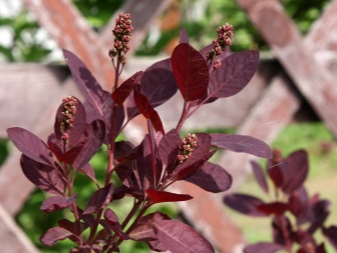
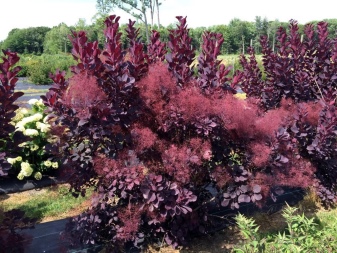
The inflorescences of the Royal Perel scumpia are collected in loose clusters, consisting of small pink buds. In the future, they crumble, and the pedicels lengthen, long hairs of a red-pink or burgundy hue develop on their surface. The period of bud formation is in late May or early June.
A year later, the matured bony fruits ripen, similar to those that are formed on the olive.
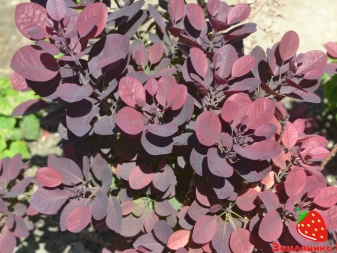
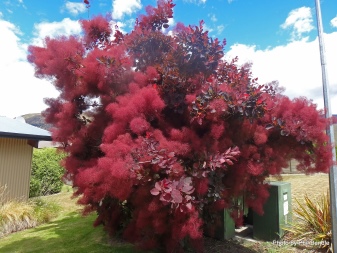
Landing
Purple-leaved scumpia Royal Purple does not show the highest survival rate when self-breeding. But the seedlings in containers with a closed root system, supplied from nurseries, are already acclimatized and feel good even in the conditions of the Moscow region or the Leningrad region. It is better to choose plants 2-3 years old, which have already undergone several wintering periods.
The timing of planting largely depends on whether the plant has a closed or open root system. In the first case, spring transfer to the ground is recommended, after the soil warms up well, night frosts will stop. In the fall, planting is also possible, but it is better to carry it out in early September, so that rooting takes place before frost. Plants in containers are not as sensitive to external influences. They are planted in open ground throughout the warm season, including summer.Using the method of transshipment of an earthen coma, you can not be afraid that the plant will not tolerate changes well.
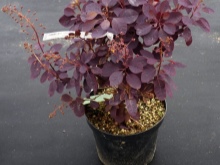
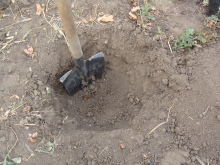
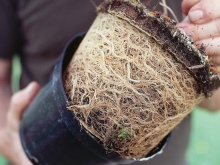
Regardless of the type of root system, it is important to choose the right place for the Royal Pearl scum. This shrub does not grow on too dense or heavy soils, stagnant water, waterloggedness, excessive acidification. You can not plant it in the lowlands - the spring stagnation of melt water can lead to the death of the plant. Scumpia Royal purple is sensitive to the amount of sunlight - it needs a well-lit area, possibly lightly shaded, not in a draft, with sandy loam or loamy soil. To prepare the ground for planting a new plant, it is worthwhile to make up a nutritious substrate in advance from 2 parts of turf and 1 part of sand and peat.
The introduction of dolomite flour or wood ash into the pit in advance will help to reduce the acidity of the soil. Such preparation will make it possible to make the cultivation of the Royal Cross scumpia truly hassle-free, and increases the chances of the seedling survival.
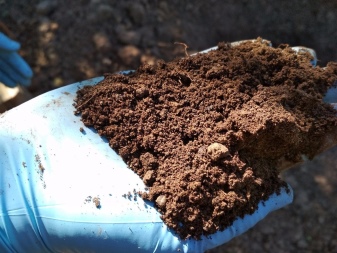
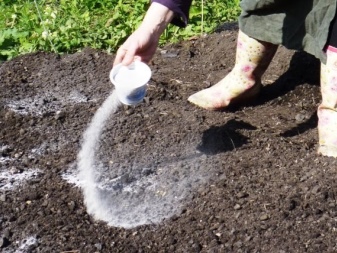
The planting process for this variety includes several steps.
- Seedling preparation. Plants with an open root system are placed in water 24 hours before planting. Container plants do not need this, they are released right before installation in the pit, keeping a completely earthen lump.
- Planting holes are dug at the selected place. It is optimal if they have a diameter of 7-10 cm larger than the earthen clod or roots. A distance of 1.5–2 m is maintained between neighboring plants.
- Drainage is being laid. The bottom of the prepared planting pit is 10 cm filled with sand and gravel. 100 g of lime is introduced into the soil mixture, the hole is filled up to half.
- The seedling is placed in the ground. If the root system is open, you first need to inspect, cut off the dried, damaged parts, then straighten the plant, set it in the center of the hole. It is very important for container seedlings to touch their roots as little as possible. Scumpia is gently rolled from the container onto a cushion of nutrient substrate.
- Backfilling with earth. The prepared substrate is loaded into the pit so that the root collar is 2 cm above the upper edge of the hole. In the future, the earth will settle, the plant will be flush with the soil. The surface of the soil is compacted, abundant watering is carried out - up to 2 buckets per 1 bush.
Important! After planting, you can mulch the soil using peat and sawdust, which will help curb the growth of weeds and ensure that the necessary moisture is maintained.
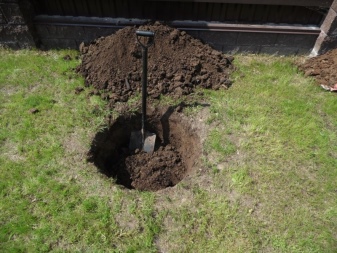
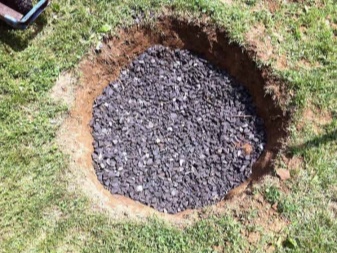
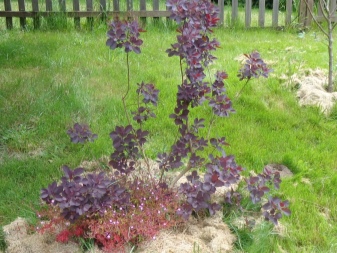
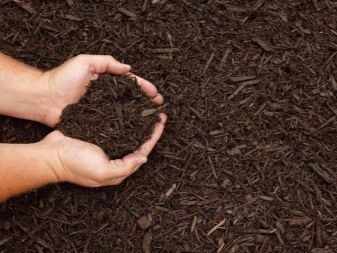
Follow-up care
In order for the Royal Pearl to root properly, develop, please with abundant flowering, it needs to be well cared for. Special measures are not required: the seedlings are protected in cold weather, regularly watered, fertilized according to the schedule. With the right choice of the landing site, other difficulties can not be expected.
Watering
Regular watering is very important for tanning skumpia. From the moment the planting appears to the growth of new shoots, moisture is introduced daily in the evening hours. For irrigation, settled water is used, preferably rather warm and clean. After the plant takes root, the soil is moistened less often, but not allowing the surface of the trunk circle to dry out. The standard volume of moisture per time is at least 1.5 buckets or 15 liters.

Top dressing
It is recommended to start the application of fertilizers under the Royal Pearl variety from the second year after planting. In the spring, nitrogen compounds are introduced, based on an aqueous solution of urea. In the summer, for the prevention of diseases, fertilize with potassium-phosphorus dressings. It is not recommended to use organic and mineral substances at the same time. If the composition of the soil is poor, you can add a root application in the spring and summer period to nitroammofosk in the amount of 200 g.
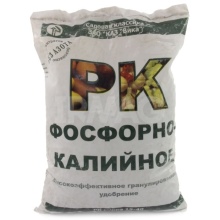

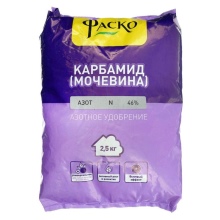
Pruning
To preserve the decorative effect of the crown, the tanning skumpia shrub requires formative and sanitary pruning. Hygiene measures are taken in the spring, before the active growth of leaves begins. Dead branches are removed, all other shoots are shortened by 2/3 of the length. Once every 3-4 years, you can perform rejuvenating pruning, with the cutting of all shoots, which stimulates branching, allows you to give a spherical shape to the crown, but affects the abundance of flowering.
Royal purple allows you to grow the plant on a trunk. In this case, you need to regularly cut off the lateral lower shoots, directing all the force on the branching of the central trunk. By the age of 10, the bush on the trunk will be fully formed.

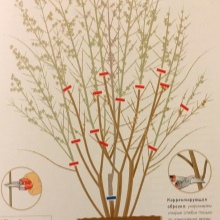
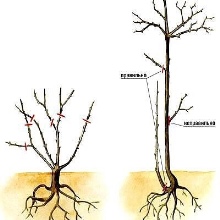
Preparing for winter
Winter hardiness of the Royal Pearl variety increases with age. Young plants are not able to withstand a significant drop in temperatures, they must be covered in the first 3-4 years. Before the onset of cold weather, when the shrub sheds its leaves, it is recommended to begin the first preparation for winter. To do this, loosening of the soil is carried out around the bush, the trunk is earthed, a thick layer of compost or peat mulch is poured over the near-trunk circle.
You can cover the bush in different ways, but always in dry weather, at the first sign of frost. A plant with a small height of shoots can be bent to the ground so that it hibernates under the snow. Shoots are placed on a clean burlap or sawdust, poured in a thick layer, secured with staples. It is also possible to build a frame above the ground to provide maximum protection to the scum. Covering material is stretched over it, allowing the bush to be properly insulated.

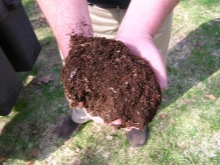
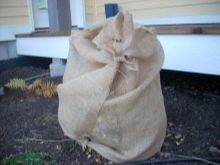
Disease and pest control
The scumpia variety Royal purple belongs to the category of plants with strong immunity. It is quite well protected from various kinds of fungal infections, but it can succumb to powdery mildew or rust. With excessively high humidity, basal stagnation of water, the plant may show signs of leaf spot, verticillosis. To prevent the appearance of diseases, it is recommended to regularly apply a complex of potassium-phosphorus fertilizers under the root. If the disease has already appeared, proven drugs "Topsin-M", "Fundazol" and their analogues will help to defeat it.
The appearance of pests on tanning skumpia is rare, but if parasites do appear, insecticidal treatment is applied against them. Against the beetle, leaf beetle and beetle, the use of "Karbofos", "Decis" helps.
Tracking the appearance of insects is especially important, since they are the main carriers of fungal infections. In addition, with significant pest damage, the plant can lose all its decorative effect.

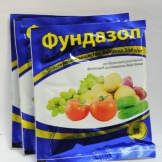
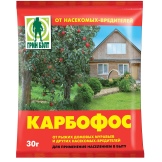
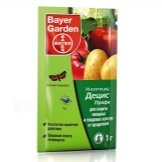
Reproduction
Like other skumpia tanneries, Royal purple supports both seed and vegetative propagation. But with generative planting, germination is extremely low, and it takes about 1 year to wait for the appearance of new shoots. Natural stratification can be used to speed up this process. Seeds are planted in open ground in the fall, after piercing the shell, the sowing depth is 2 cm. This approach provides good acclimatization of the resulting plants, but with a germination rate of 30%, it is quite difficult to get viable shoots.
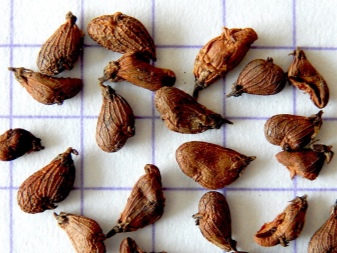

When choosing vegetative propagation, it is recommended to use cuttings or the formation of layers. They give a good survival rate, retain all the characteristics of the parent variety. To achieve rooting, the layer must be bent to the surface of the earth, cut the bark at the base, and secured in a prepared shallow trench. The place of immersion in the soil is lightly sprinkled, no special care is needed until the roots form. After rooting, you can separate the young bush, transplant it to a permanent place.
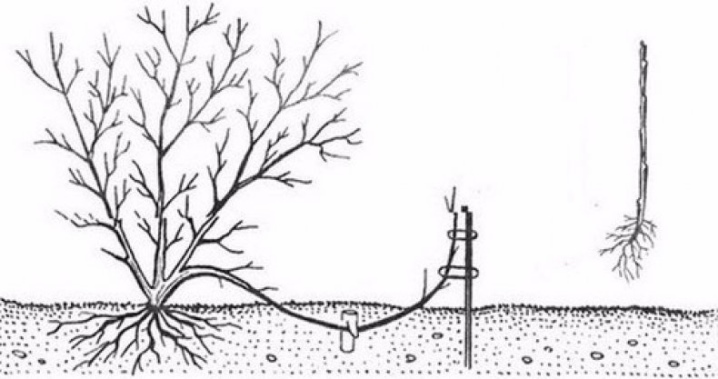
Cuttings in leather skumpia are carried out in the summer, regardless of the variety. Strong shoots of 1 year are chosen from the plant, a part about 10 cm long and with 2 leaves is cut out. Prepared cuttings are recommended to be kept for at least 12 hours in "Heteroauxin", "Kornevin", then placed in a mini-greenhouse. Before rooting, plants need the most abundant watering, at least 3 times a day. In the second year, you can plant the established cuttings in open ground.
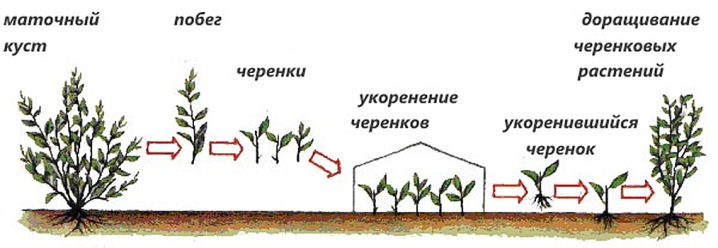
Beautiful examples in landscape design
The luxurious view created by the Royal Pearl, planted next to the terrace, is harmoniously complemented by the white facade of the house. The plant plays the role of a tapeworm on the lawn; shorter conifers are planted nearby.
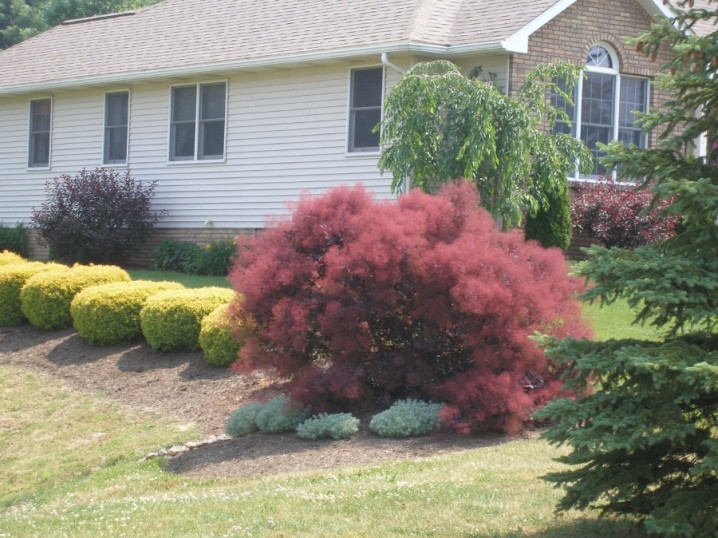
Young scumpia Royal purple on a lawn with medium length of grass. The green corner of the garden is framed by well-groomed paths.

Scumpia after flowering. The bright shades for which the Royal Pearl variety is famous harmonize with the silvery-gray tones of the surrounding plants.

For a video review of this variety, see below.



































































The comment was sent successfully.